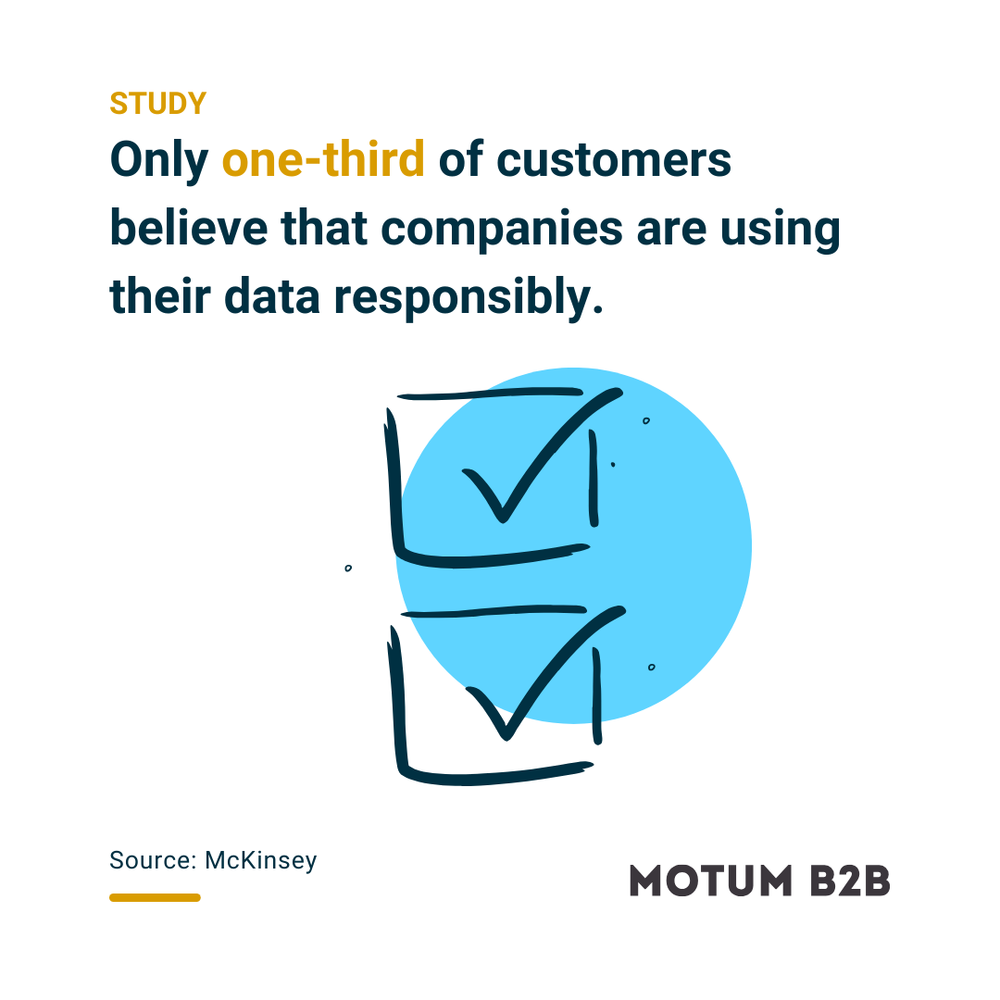5 ways to elevate your B2B website and encourage sales
A selection of small changes you can introduce to your website to make a big impact.

You’ve got a shiny website showcasing your business, its products, and services, but is it as ready for potential customers as it should be and are you using its sales tools as effectively as possible?
From CTAs to interactives, we look at why websites are important and how you can leverage them to maximize their value.
Forms
Back in 2020, we shared a post about creating a web form that converts. In that, our Lead Front-End Developer Chris Fantauzzi talked about the importance of designing forms with the user in mind so you can ensure they’re capturing only the data you need.
Today, forms still offer a great opportunity to capture that data so you can provide customers with a more engaging and personalized experience.
According to HubSpot, almost 30% of marketers say the right form fields can help improve lead scoring. Just make sure you’re thinking about your form’s layout, design, and where it’s sitting on your site.

Chatbots
Chatbots have been a staple of B2B websites for some time, and with their “always-on” availability, personalization, and cost efficiency, you can see why. In our blog post on chatbots, Steve Lendt, our Director of Engagement and Analytics, talked about how chatbots “could have a blend of live chat and custom automation or chatbot working together, because that's what we find is still relevant to the B2B space.”
A 2023 survey from Gartner revealed that only 8% of customers used a chatbot during their most recent customer service interaction, with only a quarter of those saying they’d use a chatbot again. It’s important to consider their use case and ensure they’re positioned and implemented to have the most impact.
As Michael Rendelman, Senior Specialist, Research said as part of the Gartner report, “chatbots aren’t effective for all issue types. As generative AI makes them more advanced, customer confusion about what chatbots can and can’t do is likely to get worse. It’s up to service and support leaders to guide customers to chatbots when it’s appropriate for their issue and to other channels when another channel is more appropriate.”
Interactives
As something that reframes a message, highlights storytelling, and encourages people to engage with your content, interactives are a great way for B2B brands to make an impact.
In a post about how interactives work, our Web Developer, Ben Reimer, shared that “interactives really set you apart from competitors. If all competitors are using WordPress themes and they all look the same, having a bespoke interactive hugely sets you apart. That’s something no one can easily copy.”
Interactives can be delivered in all sorts of creative outputs, including quizzes, interactive charts, calculators, 3D viewers, and product libraries. What’s important is that you think about them with your customer in mind.

CTAs
A CTA, or call-to-action, is an important part of your B2B website, prompting a visitor to do something that benefits them. Alongside improving conversions and engagement, they can streamline decision-making and help shape your sales funnel.
Whether you want someone to FIND OUT MORE or BOOK A DEMO, getting a CTA’s design right is crucial. Sometimes a simple hyperlink can work, but there’s also the opportunity to turn it into a button that’s been highly designed, strategically placed on the page, with copy that feels clickable.
Content hubs
Content has always been an important way of engaging with both current and prospective customers. Your website should have a place for it that’s easy to navigate, and the content itself should be rich with insight, visuals, and CTAs to encourage sales and engagement.
According to the Content Marketing Institute’s outlook for 2024, short articles, videos, and case studies (also called customer stories) are the most popular formats.
There are ways to elevate this content, too, through dedicated sections that feature downloadable brochures, manuals, and information a customer needs. You could also publish higher-value content like whitepapers, gated behind a form that you can offer as value in exchange for information.

Wait! There’s still more to think about.
Accessibility
Did you know that, according to the 2023 WebAIM Million report, there are an average of 50 accessibility errors per web page? While it’s a slight decrease from the year before, it highlights the fact that there’s still more work to be done.
When integrating any of these features into your website, make sure you’re doing it with accessibility in mind.
Data
Many of these solutions offer the opportunity to collect data, so how you collect, store, and use it is another consideration that should be top of mind. According to a study from McKinsey, only about one-third of customers believe that companies are using their data responsibly, so it’s something that needs to be approached with trust.
The future
None of this should be set-it-and-forget-it. You’ll get the most out of these tools if you revisit them often, analyze how people are interacting with them, and adjust accordingly.